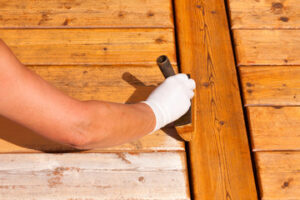Preventive Deck Maintenance
If you want to keep your deck looking good, you need to regularly conduct preventive maintenance. Inspecting the joists and the support posts of the deck is an important aspect of deck maintenance. It’s also important to look for signs of rot. Visit Website for some tips to ensure the health of your deck:
Checking for signs of rot on your deck is important. Rotted wood can cause a range of structural issues and can be dangerous. The deteriorated wood will not only look unappealing but may also be a breeding ground for insects and other wood-eating pests. If you suspect rot on your deck, call a professional to inspect it for you.
If you find a board with discoloration or cracks, the wood will likely need to be replaced. Wood rot can be localized, or it can be widespread. Typically, rotten wood will be highly porous and crumbly. It may also delaminate and flake. If you find such a piece, place a tarp nearby and remove the board. Make sure you wear protective gloves and safety glasses.
If you notice any signs of rot on a deck, it is important to replace it. While small sections of wood may be able to be replaced, larger repairs will be necessary to restore the stability and safety of the deck. In some cases, the deck might need to be completely replaced.
You can prevent rot by keeping moisture out of your deck. You can also treat it by staining or sealing it. To prevent dry rot, make sure your deck is clean and free of dirt and debris. Cleanouts are also helpful in preventing moisture from seeping into the wood.
Sanding the deck is a necessary part of deck maintenance. Sanding the surface is necessary to remove raised wood fibers and create a smooth surface. Raised wood fibers can lead to splinters when they dry. A 5″ orbital sander can be used to sand the deck surface. Coarse sandpaper will work well, while finer sandpaper will take too much time. Make sure to wear a mask while sanding the deck.
Before sanding the deck, you should check all surfaces and make sure all screws are tight. If any boards are loose, you should install new fasteners. You should also fill in any splinters with wood filler and allow the wood to dry before sanding.
If you use a disc floor sander, you should be careful not to over-sand the surface of the deck, as this may lead to scratch marks. Using a drum sander, on the other hand, can cause damage to the nail heads and screws in the decking.
After sanding the deck, you should apply a deck stain or sealant. To avoid the wood from getting dirty, you should do this as soon as possible. Sanding the deck will make it easier for the stain or sealant to adhere to the wood. If you cannot wait for the stain or sealant to dry, you can vacuum the deck and wipe it down with a tack cloth before staining it.
Before applying a sealant, you should prepare the deck by sanding it down and drying it completely. Use 80-grit sandpaper to remove rough spots and splinters. After sanding, apply a thin coat of sealant to the deck using a brush, roller, or sprayer. A thin coat will adhere to the wood better than a thick one.
Sealants should be applied at least once a year. While sealants may seem to last for years, they are not permanent and require periodic reapplication. They should be cleaned thoroughly every two to three years. If your deck has been sealed for a few years, you may not need to reapply it as frequently.
The best time to apply a sealant to your deck is on a sunny day between 50 and 90 degrees Fahrenheit. A hot day will cause the sealant to evaporate quickly and won’t penetrate into the wood properly. However, if you don’t know how to apply sealant, it is best to call a professional to apply it.
